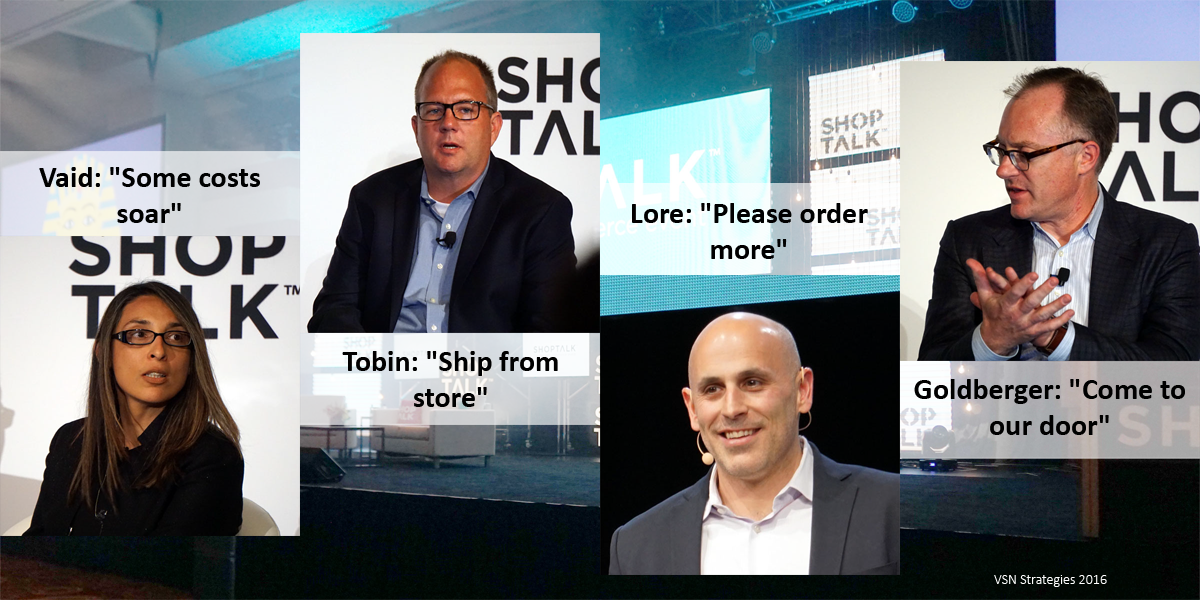IN THE FRICTION-FREE WORLD of online retailing, getting the order is easy. Delivering on the promise is hard.
At the Las Vegas Shoptalk conference last week retail thought-leaders shared insights about the fulfillment challenge. Their consensus: it’s not going to get any easier.
“My bet on shipping is faster and freer,” said Jason Goldberger, president, Target.com and Mobile Target, in a panel on The Changing Role of Stores in Ecommerce Fulfillment.
“It used to be that our guests just wanted free shipping,” he added. Now they demand overnight delivery and same-day store pickup.

Michael Tobin, SVP Strategy & Innovation at Macy’s, explained that successful and cost-effective fulfillment now requires a sophisticated algorithm that considers multiple factors, including the ship-to address, units on hand, units to ship, location capacity, combinability of items in an order, and more. “We’re on the 3rd or fourth version of that algorithm,” he said.


